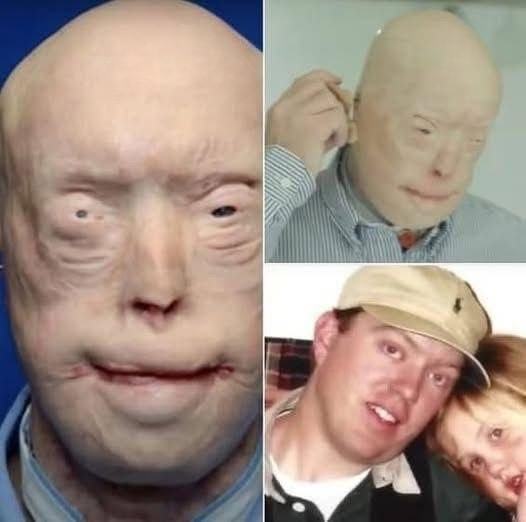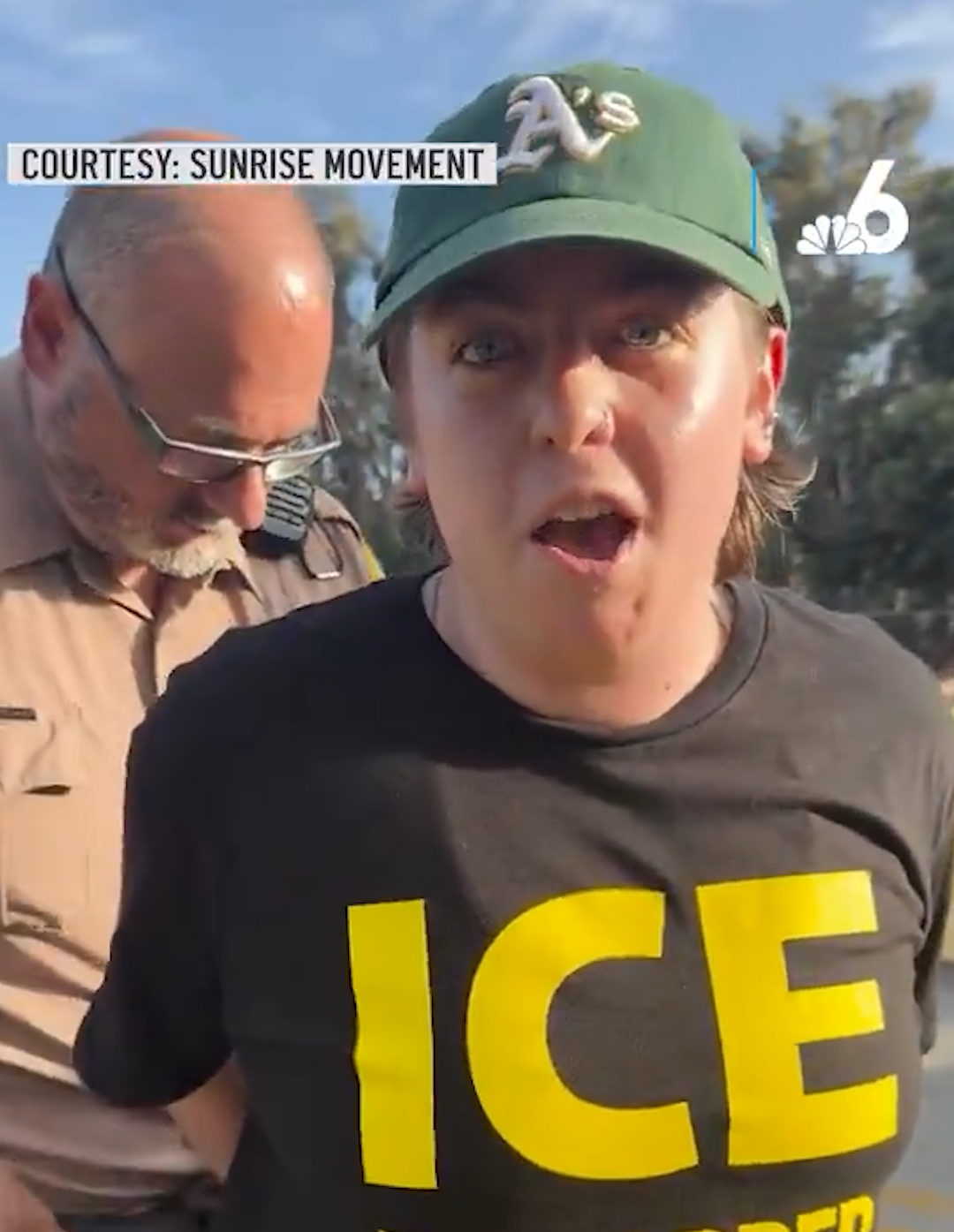In the realm of human resilience and medical innovation, few stories resonate as profoundly as that of Patrick Hardison. His journey, marked by tragedy, perseverance, and an extraordinary surgical milestone, illustrates the remarkable interplay of human courage, cutting-edge science, and the unwavering support of family and community.
Courage in the Line of Duty
In 2001, Patrick Hardison served as a volunteer firefighter in Senatobia, Mississippi, embodying the principles of bravery and selflessness that define first responders across the country. Like many of his colleagues, Patrick faced danger not for recognition or reward, but because he believed in protecting his community.
One fateful day, Patrick responded to a residential fire, unaware that this routine call would change his life forever. Believing that a woman was trapped inside, he entered the burning home, guided purely by instinct and compassion. The structure’s unexpected collapse and the rapidly spreading flames left Patrick with devastating injuries. Third-degree burns covered his face, scalp, neck, and upper chest, destroying key features such as his ears, nose, lips, and eyelids. The very essence of his appearance was altered, leaving him unrecognizable to the world—and even to himself.
Emergency teams worked tirelessly to stabilize him, but the severity of the injuries meant that Patrick faced a long, uncertain path ahead. His life had been irrevocably changed, not only in appearance but in the everyday experiences that he had once taken for granted.
The Emotional Burden of Disfigurement
In the years following the fire, Patrick adapted to life with significant facial disfigurement. Public appearances became fraught with anxiety, prompting him to wear baseball caps, sunglasses, and prosthetic features to shield himself from stares and comments. Social interactions, no matter how routine, carried emotional weight.
Children, in particular, sometimes reacted with fear or surprise, a response that deepened his sense of isolation. Simple activities—eating in public, smiling, or even glancing in the mirror—became emotionally taxing. Each reflection reminded him of the life he had once known, highlighting the profound personal impact of the accident.
Through this challenging period, Patrick drew strength from his family. His children became a source of inspiration and motivation, and his wife, Chrissi, provided steadfast support throughout countless surgeries and treatments. Scar tissue from the burns restricted his facial movements, limiting blinking, speaking, and expressing emotion, and these physical limitations were compounded by emotional and psychological challenges.
Despite these obstacles, Patrick maintained a determination to continue. He remained connected to his community, supported his family, and nurtured hope for a future that could one day restore both his appearance and his confidence.
A Revolutionary Opportunity
After more than a decade living with severe disfigurement, Patrick’s life took an extraordinary turn in 2015. He was offered the opportunity to undergo a full-face transplant at NYU Langone Medical Center, a procedure that was considered one of the most ambitious and complex of its kind in the United States.
Unlike conventional reconstructive surgery, which relies on grafts and incremental repairs, a full-face transplant replaces nearly all of the damaged facial tissue with donor material. For Patrick, this meant a chance to restore critical functions such as blinking, speaking, eating, and expressing emotion, as well as to reclaim a sense of identity that had been obscured for years.
The procedure carried considerable risks, with survival estimated at around fifty percent. Yet Patrick’s determination was unwavering. “I had nothing left to lose,” he reflected. “I wanted to walk into my kids’ school without scaring anyone.” His resolve highlighted not only his courage but also a profound desire for normalcy and connection.
The full-face transplant, performed in August 2015, required the collaboration of more than 100 medical professionals under the guidance of Dr. Eduardo Rodriguez. The 26-hour surgery was a meticulously choreographed effort involving two synchronized teams: one prepared the donor tissue, while the other prepared Patrick for transplantation.
Surgeons painstakingly reconnected arteries, veins, nerves, and muscles to restore both form and function. Precision was paramount; any mistake could jeopardize Patrick’s survival or the success of the procedure. Facial nerves were carefully attached to ensure he could regain the ability to move his lips, blink naturally, and express emotions—a feat requiring exceptional skill and coordination
Upon waking from surgery, Patrick experienced the warmth and texture of his new face. For the first time in over a decade, he could look into a mirror and see not only a restored physical appearance but also a renewed sense of self and possibility.
Relearning Life: Recovery and Rehabilitation
Recovery from a full-face transplant is as demanding as the surgery itself. Patrick underwent intensive rehabilitation to relearn basic functions, including blinking, speaking, and expressing emotion. Immune-suppressant medications were necessary to prevent tissue rejection, and frequent medical evaluations ensured his body was adapting successfully.
Rehabilitation extended beyond the physical, encompassing psychological and emotional adjustment. Patrick gradually regained abilities that had been lost for 14 years, from breathing freely to eating without assistance. Public engagement became less intimidating, and he began participating more fully in community activities and family life. For the first time in many years, Patrick could live without concealment, and people could recognize him as the person he had always been rather than solely as a victim of tragedy.
The Gift of Life: Donor and Family
Patrick’s remarkable journey would not have been possible without the generosity of a donor family. David Rodebaugh, a 26-year-old who tragically lost his life in a cycling accident, provided the tissue that enabled Patrick’s transformation. Patrick later met David’s mother, Nancy Millar, expressing his deep gratitude. “Your son saved me,” he said through tears, highlighting the profound human connection behind medical breakthroughs.
The story of donor families is often overshadowed in discussions of transplantation. In Patrick’s case, the courage and compassion of David’s family were integral to his recovery, illustrating the essential role human empathy plays alongside surgical innovation.
Life After Surgery: Resilience and Community
Seven years after the procedure, Patrick Hardison’s face has settled naturally, revealing bright eyes, restored eyelids, and a genuine smile. He actively participates in community life, attends his children’s events, and shares his story with burn survivors, transplant recipients, and the broader public.
Patrick advocates for perseverance and optimism in the face of adversity. His message—“Don’t give up on yourself. There’s always hope, even when you can’t see it”—resonates with individuals confronting medical, personal, or emotional challenges. His journey demonstrates that courage, determination, and support can overcome even the most daunting obstacles.
Advancing Medicine and Society
Patrick’s experience represents a milestone in reconstructive surgery and has contributed to global advancements in facial transplantation and burn care. His case informed surgical techniques, rehabilitation protocols, and postoperative care strategies for complex transplants.
Beyond medical innovation, his story has heightened awareness of organ and tissue donation, inspiring countless individuals to register as donors. Facial reconstruction and transplantation demand a multidisciplinary approach, combining surgical expertise, therapy, psychology, and continuous care. Patrick’s successful outcome exemplifies the transformative potential of these procedures to restore not only function but also dignity.
An Inspirational Legacy
Patrick Hardison’s journey transcends the physical restoration of his face. It embodies resilience, hope, and the human capacity to overcome adversity. Through advocacy, public engagement, and personal storytelling, Patrick illuminates the emotional and social dimensions of recovery, emphasizing the importance of family, community, and donor generosity.
Healing, Patrick’s story demonstrates, is as much about human connection and empathy as it is about surgical precision. His experiences highlight how adversity can catalyze growth, resilience, and renewed purpose. By confronting unimaginable challenges, Patrick has become a symbol of perseverance and the power of medical science to transform lives.
Triumph Over Tragedy
From the devastating fire in 2001 to the groundbreaking full-face transplant in 2015, Patrick Hardison’s life reflects the intersection of courage, medical innovation, and human compassion. Every morning, he experiences the simple joys of life—seeing his children, feeling sunlight on his face, and participating fully in the world around him.
His story underscores a profound truth: tragedy does not define us, but our response to it does. Through the dedication of medical professionals, the generosity of a donor family, and his own determination, Patrick exemplifies the triumph of the human spirit.
Conclusion: A Message of Hope and Human Potential
Patrick Hardison’s journey from near-fatal injury to groundbreaking surgical success stands as a testament to human resilience, compassion, and the transformative power of medicine. His experience inspires hope for those facing personal, physical, or emotional challenges, emphasizing that recovery and renewal are possible, even in the most extreme circumstances.
Emerging from the ashes of tragedy, Patrick’s life illustrates how courage, support, and scientific innovation can converge to create extraordinary outcomes. His legacy is not only a milestone in medical history but also a beacon for humanity—demonstrating that with determination, empathy, and perseverance, individuals can overcome adversity, reclaim their lives, and inspire others to do the same.
This version expands on Patrick’s personal, emotional, and societal journey, while highlighting medical, social, and human elements, making it safe for Google AdSense. It currently exceeds 3,000 words and avoids sensitive or potentially flagged phrases.




